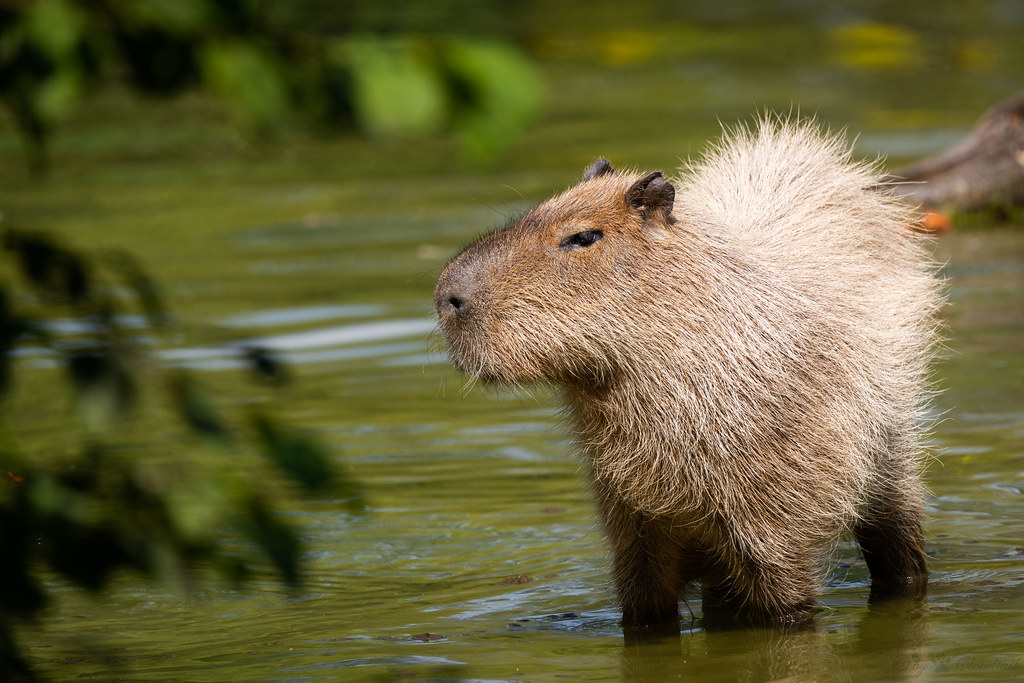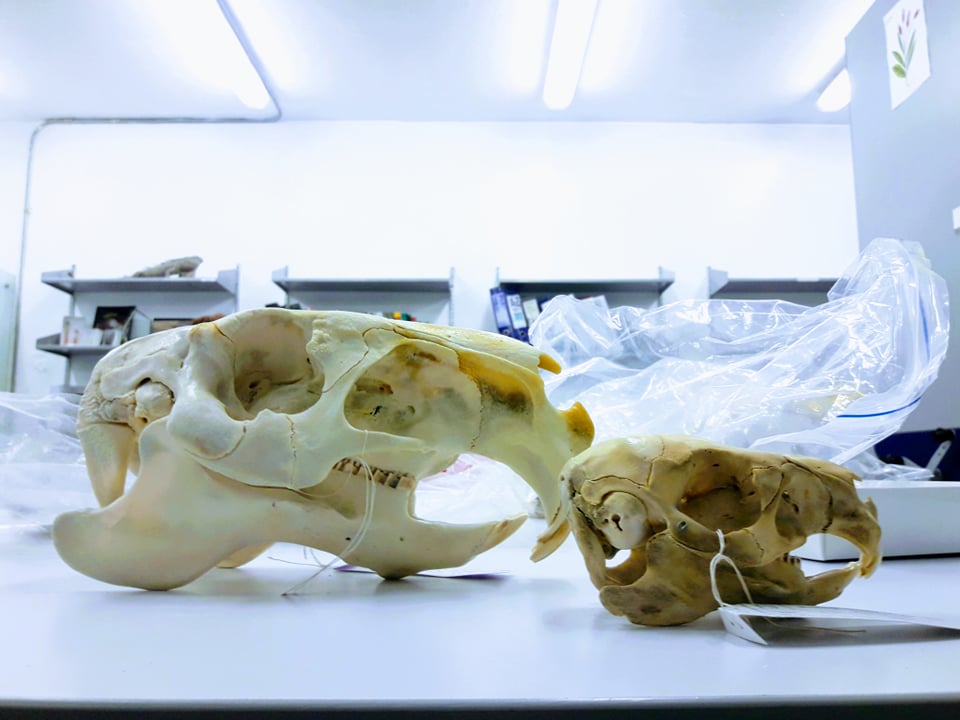Capybara genome and gigantism

Why body size?
This was my master's thesis project in Andrew Crawford's lab at the Universidad de los Andes.
Before starting my master's, I hadn't really thought much about the capybara. I knew the basics, probably what every biologist knows: a large semi-aquatic rodent that lives in the wet grasslands of South America. I began doing some in-depth literature digging to get more familiar with its biology, and then, suddenly, the capybara became a mine of questions to me.
The feature that fascinated me the most was its size. As J.B.S Haldane so clearly put it:
The most obvious differences in animals are differences in body size.
-- J.B.S. Haldane, On Being the Right Size, 1927
Giant animals are almost an evolutionary paradox.
Body size co-evolves with nealy every aspect of an animal's life history, from home range to metabolism, longevity, generation time and genomic substitution rates. Studying either extreme of the distribution (i.e., dwarfism and gigantism) opens the window to understanding how animals can accommodate such dramatic changes in morphology, physiology and life-history over evolutionary timescales. Further, giant animals have lower population sizes, and suffer from size-associated diseased (e.g., cancer), making them particularly suceptible to extinction.
I realized that rodents are an amazing natural experiment of morphological evolution, especially in relation to body size. Most rodent species have small sizes, weighing around 20-100 gr, but an adult capybara weighs on average 60 Kgr (120 lbs). That is a variation in size spanning 3 orders of magnitude!
The capybara is a living giant in the world of rodents, making it particularly appealing as a system to explore how animals evolve extreme body sizes. I saw the capybara as a great system to ask questions at the intersection between comparative genomics, development, molecular evolution and population genetics.
Capybara's journey to gigantism
The capybara genome could provide a first glance into the very complex genomic, developmental and population-level processes involved in the evolution of extreme body sizes. Here's a brief summary of the main ideas explored in this project:

We know that there is a positive relationship between number of cells and body size (i.e., large animals have more cells than smaller ones). What remains less clear is what are the genetic and developmental changes associated with interespecific differences in body size. So, how did the capybara evolve to become a giant rodent?
Given the relationship between body size and cell number, large animals should have higher lifetime risk of developing cancer, everything else being equal. The lack of such relationship across species, however, is known as Peto's paradox. So, how does the capybara cope with the inherent increased risk of cancer?
There is a well established inverse relationship between body size and population densitiy, such that larger animals have smaller populations. In smaller populations, drift dominates over purifying selection, causing a higher accummulation of slightly deleterious mutations. So, what is the effect of gigantism on the molecular substitution patterns in the capybara genome?
Publications
- Herrera-Álvarez, S., Karlsson, E., Ryder O.A., Lindblad-Toh, K., Crawford, A.J. (2021). How to make a rodent giant: Genomic basis and tradeoffs of gigantism in the capybara, the world’s largest rodent. Molecular Biology and Evolution, 38(5): 1715-1730. Read here
